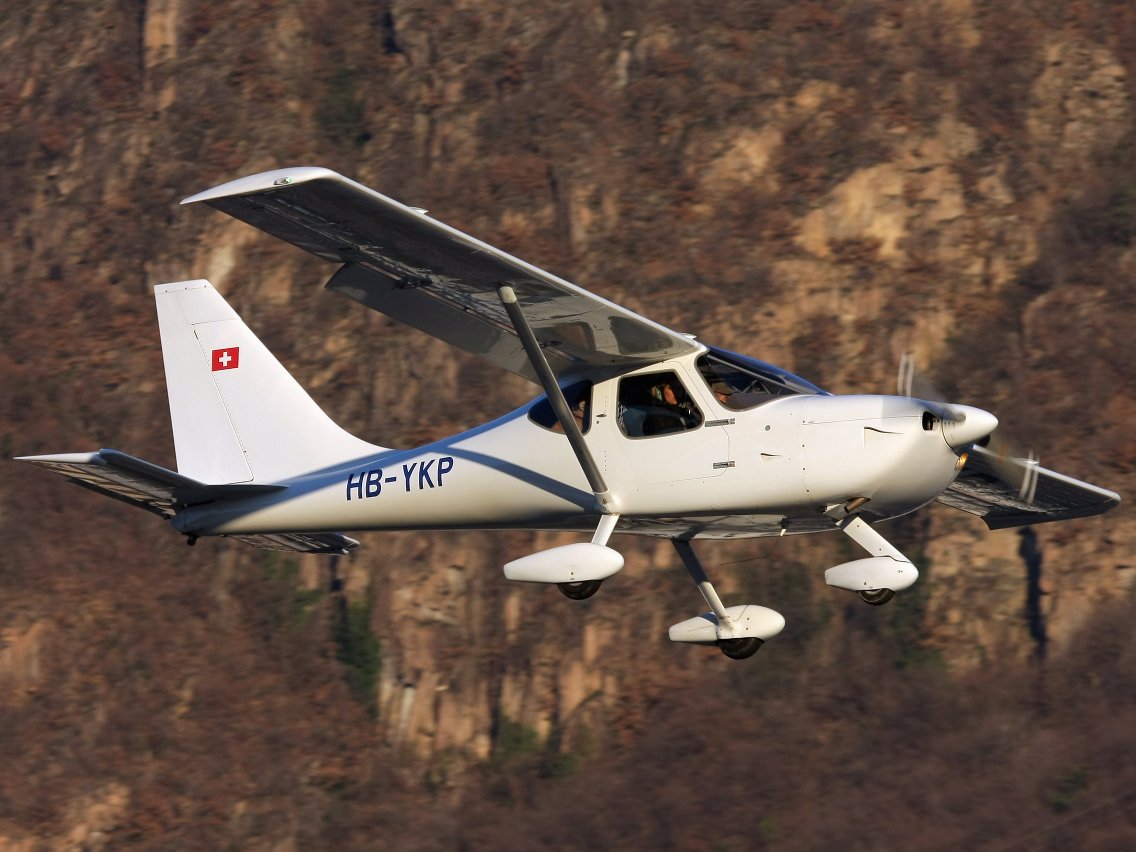
I marvel at the feel and authority of the GlaStar in a climb, especially at slow airspeeds. Let’s look at a normal climb, best angle climb and, finally, ultra-high performance. Climbs are covered in section 4-7 (page 19) in Stoddard Hamilton’s highly rated Owner’s Manual on the GlaStar. If you install a gravity-feed fuel system (no pump) against Stoddard-Hamilton’s recommendation, then be prepared for fuel starvation (engine stoppage) on any high pitch-up maneuver. It might be helpful to review the previous article on takeoffs.
After liftoff on a long runway, I remove half flap and climb at 80. (Vy [best-rate-of-climb speed] starts at 78 @ sea-level and my rule of thumb is to lower Vy by one knot for each 1000′ increase in altitude.) I use full power for most climbs, using Lycoming’s system of extra fuel flow to help cool the engine. Lycoming doesn’t recommend leaning the mixture above 75% power. If traffic ahead is not a factor or I am at less than gross weight and going cross-country, then frequently I will do an extended climb at 100. This improves over the nose visibility and helps keep the cylinder head temperature lower. If any doubt exists about conflicting traffic, I momentarily lower the nose and confirm plenty of clearance.
If it’s a shorter runway, upon liftoff, pitch the GlaStar to climb at 65 and keep half flaps. I like to climb initially at a fairly quick rate to get away from any obstacles. It’s usually dangerous not to be able to land an airplane on the airport if there is a power problem. Below 500′ if I lost power, I would lower the nose abruptly to maintain at least 65, turn only a little to the left or right choosing the most appropriate place ahead to apply full flaps and land the airplane. I’ve found that over 500 feet above the ground, if all power is lost, I have enough altitude so that the nose can be immediately lowered and the GlaStar glided in a 180° turn back to the airport. What is your above the ground minimum to make a 180 degree turn without power at your density altitude? Remember: In any emergency, first fly the airplane then see if something wrong can be corrected. I’d always keep the GlaStar above 65 if power weren’t available.
In real short fields with obstacles, it is possible to climb the GlaStar using full flaps and power. Full-flap climbs are entering into some advanced flying techniques. If obstacles ahead in my climb path are getting too close, I increase my speed (if below 65) to at least 50 and head directly towards the obstacle. This keeps it in view and allows me to either turn or jump over it. A canyon or small-hole climb is very practical using 50 IAS, with full power and full flaps. This 500′ per minute, spiraling, coordinated, 30 degree bank climb is a great practice and ascent maneuver. Don’t let your cylinder head temperature get too high in these slower airspeed climbs. Remain very aware of density altitude, aircraft weight, airspeed, coordinating controls and the lowest elevation to turn to if the GlaStar can’t out-climb the terrain. I climb using power, or momentarily trading airspeed for altitude. This requires a familiarity with the specific GlaStar and its weight. Again, these types of climbs are only after you have mastered the feel and airspeed control of the GlaStar. Close to the ground or water I use lots of power, airspeed control and this “feel” of the aircraft to climb around things. I quickly scan the rate-of-climb instrument when I’m close to any object to assure that I’m not inadvertently descending during maneuvers.
Few aircraft in the world can match the GlaStar’s climb control at lower speeds. It will, however, descend at an alarming rate at lower airspeeds (below 65) without sufficient power. Don’t damage your airplane or yourself. Either operate the GlaStar above 65 or get an instructor who knows the GlaStar to help you understand these slower, advanced, climbing techniques.
Tim Johnson’s articles are his own perspective and reflect over 1,000 hours of safely flying the prototype GlaStar in demonstration, cross-country, and air-show flights. Your experience, training, GlaStar airplane, and local situations may require different procedures. Be safe! Never attempt something just because someone else did it! The current GlaStar Owner’s Manual and current FAA and/or local regulations are your overriding guides. Airspeeds used are KIAS (indicated airspeed in knots).



